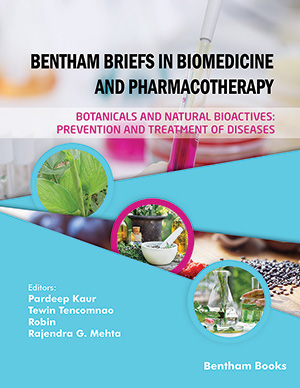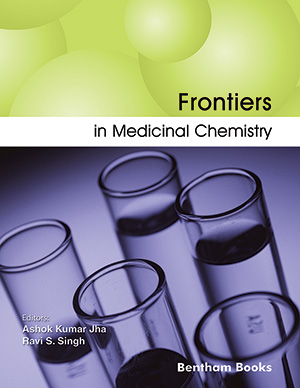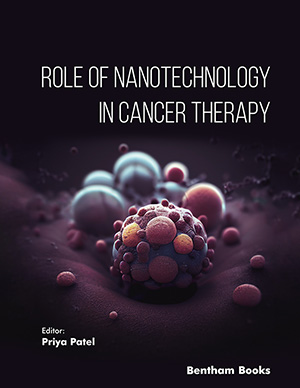Abstract
Background: Acorus tatarinowii and Ginseng (AT-G) are traditional Chinese herbal medicines extensively utilized in neurological disorders treatment. However, due to the complex components of AT-G and the pathological mechanism of ASD, the mechanisms involved in the treatment of ASD with AT-G remain elusive.
Objectives: We explored AT-G potential mechanisms in ASD treatment.
Methods: We used the network pharmacology approach to evaluate the beneficial effects of AT-G for ASD, including obtaining the active components of AT-G by the Traditional Chinese Medicine Systems Pharmacology (TCMSP) platform, detecting the potential targets genes associated with ASD of Genecards and DisGenet databases, network analysis, and virtual docking.
Results: A total of 26 AT-G components, 130 AT-G targets, and 806 ASD-related genes were identified using the bioinformatics analysis tool, including TCMSP, Genecards, and DisGenet. In the intersection of potential pharmacodynamic targets of AT-G and genes associated with ASD, we identified 41 potential common targets. Then, GO enrichment analysis revealed that the common targets were mainly associated with biological processes (i.e., positive regulation of nitric oxide biosynthetic process, response to xenobiotic stimulus), cellular components (i.e., the presynaptic membrane and postsynaptic membrane), and molecular functions (i.e., RNA polymerase II transcription factor activity, identical protein binding). KEGG pathway analysis found that the common targets were enriched in chemical carcinogenesis - receptor activation, fluid shear stress and atherosclerosis, lipid and atherosclerosis, and IL-17 signaling pathways. In addition, 10 core targets were screened from the PPI network (e.g., TNF, AKT1, PTGS2, IL1B, MMP9, PPARG, IFNG, NOS2, TGFB1, and CASP1). Molecular docking revealed that the common component kaempferol has a high affinity for the four primary disease targets.
Conclusion: Our results facilitated the in-depth development of AT-G and their individual components and provided a reference for clinical practice.
Keywords: Acorus tatarinowii, Ginseng, autism spectrum disorder, network pharmacology, molecular docking, molecular mechanism.
[http://dx.doi.org/10.1016/S0140-6736(18)31129-2] [PMID: 30078460]
[http://dx.doi.org/10.1007/s12264-020-00530-6] [PMID: 32607739]
[http://dx.doi.org/10.1542/peds.2013-0763] [PMID: 24515505]
[http://dx.doi.org/10.1016/j.arr.2023.102092] [PMID: 37839757]
[http://dx.doi.org/10.3389/fphar.2022.914352] [PMID: 35721176]
[http://dx.doi.org/10.1016/j.phrs.2020.105376] [PMID: 33316383]
[http://dx.doi.org/10.1016/j.jep.2019.111967] [PMID: 31128148]
[http://dx.doi.org/10.1016/j.ijbiomac.2020.06.266] [PMID: 32621930]
[http://dx.doi.org/10.3389/fncel.2020.00055] [PMID: 32265659]
[http://dx.doi.org/10.1016/j.jgr.2020.09.002] [PMID: 33841001]
[http://dx.doi.org/10.3390/molecules27227824] [PMID: 36431931]
[http://dx.doi.org/10.1016/j.phrs.2022.106099] [PMID: 35092819]
[http://dx.doi.org/10.3390/ijms24087223] [PMID: 37108384]
[http://dx.doi.org/10.1016/j.jep.2020.113249] [PMID: 32810619]
[http://dx.doi.org/10.3389/fphar.2019.00123] [PMID: 30846939]
[http://dx.doi.org/10.1038/nchembio.118] [PMID: 18936753]
[http://dx.doi.org/10.1186/1758-2946-6-13] [PMID: 24735618]
[http://dx.doi.org/10.1016/j.csbj.2021.05.015] [PMID: 34136095]
[http://dx.doi.org/10.1093/nar/gkac194] [PMID: 35325185]
[http://dx.doi.org/10.1093/nar/gkaa1074] [PMID: 33237311]
[http://dx.doi.org/10.1021/acs.jcim.1c00203] [PMID: 34278794]
[http://dx.doi.org/10.21037/tp.2019.09.09] [PMID: 32206584]
[http://dx.doi.org/10.1016/j.pcl.2020.02.007] [PMID: 32443991]
[http://dx.doi.org/10.1016/j.pharmthera.2018.05.007] [PMID: 29763648]
[http://dx.doi.org/10.1371/journal.pone.0163337] [PMID: 27685847]
[http://dx.doi.org/10.1111/acel.12356] [PMID: 26010330]
[http://dx.doi.org/10.3390/ijms242015320] [PMID: 37894998]
[http://dx.doi.org/10.1016/j.jgr.2023.05.001] [PMID: 37720568]
[http://dx.doi.org/10.1016/j.phymed.2023.154695] [PMID: 36774844]
[http://dx.doi.org/10.1007/s12975-023-01139-3] [PMID: 36781743]
[http://dx.doi.org/10.1155/2021/7158444] [PMID: 34887998]
[http://dx.doi.org/10.1021/acsomega.1c06922] [PMID: 35224394]
[http://dx.doi.org/10.3390/molecules24162939] [PMID: 31416121]
[http://dx.doi.org/10.1039/D3FO00496A] [PMID: 37464840]
[http://dx.doi.org/10.1016/j.jgr.2014.09.002] [PMID: 26045684]
[http://dx.doi.org/10.1016/j.jep.2015.12.020] [PMID: 26721223]
[http://dx.doi.org/10.1016/j.biopha.2022.113207] [PMID: 35667236]
[http://dx.doi.org/10.1039/C6FO01077F] [PMID: 27801453]
[http://dx.doi.org/10.3390/molecules27249061] [PMID: 36558193]
[http://dx.doi.org/10.1016/j.jgr.2018.01.001] [PMID: 30976157]
[http://dx.doi.org/10.3390/molecules24122277] [PMID: 31248102]
[http://dx.doi.org/10.1080/13880209.2021.1961823] [PMID: 34403325]
[http://dx.doi.org/10.3390/nu11102288] [PMID: 31557798]
[http://dx.doi.org/10.2174/1381612828666220926095922] [PMID: 36165527]
[http://dx.doi.org/10.1002/ptr.7396] [PMID: 35234314]
[http://dx.doi.org/10.3389/fnins.2019.01098] [PMID: 31680833]
[http://dx.doi.org/10.1002/aur.107] [PMID: 20029827]
[http://dx.doi.org/10.1534/g3.117.039784] [PMID: 28235828]
[http://dx.doi.org/10.1080/14728222.2022.2100252] [PMID: 35811505]
[http://dx.doi.org/10.1007/s00213-021-05941-5] [PMID: 34448020]
[http://dx.doi.org/10.3389/fnins.2022.862315] [PMID: 35663546]
[http://dx.doi.org/10.1038/s41380-020-0667-y] [PMID: 32034290]
[http://dx.doi.org/10.1038/s41398-022-01890-5] [PMID: 35351881]
[http://dx.doi.org/10.1073/pnas.2112852119] [PMID: 35165191]
[http://dx.doi.org/10.1073/pnas.1416940111] [PMID: 25313065]
[http://dx.doi.org/10.3389/fimmu.2022.874064] [PMID: 35757754]
[http://dx.doi.org/10.1016/j.bbi.2017.09.010] [PMID: 28935156]
[http://dx.doi.org/10.1016/j.brainresbull.2018.08.020] [PMID: 30172736]
[http://dx.doi.org/10.2174/1871527319666200628015039] [PMID: 32600237]
[http://dx.doi.org/10.1038/tp.2016.77] [PMID: 27351598]
[http://dx.doi.org/10.1016/j.ejphar.2020.173663] [PMID: 33127361]
[http://dx.doi.org/10.1016/j.brainresbull.2016.06.007] [PMID: 27320472]
[http://dx.doi.org/10.3390/molecules28041889] [PMID: 36838876]
[http://dx.doi.org/10.1038/s41598-019-39434-5] [PMID: 30816216]
[http://dx.doi.org/10.1111/jcmm.17899] [PMID: 37550884]
[http://dx.doi.org/10.1186/s12944-021-01578-7] [PMID: 34742290]
[http://dx.doi.org/10.1002/aur.1254] [PMID: 23008271]
[http://dx.doi.org/10.1111/jnc.15037] [PMID: 32374912]
[http://dx.doi.org/10.1111/acps.12020] [PMID: 23039165]
[http://dx.doi.org/10.1007/s11011-019-00510-4] [PMID: 31728886]
[http://dx.doi.org/10.1016/j.pnpbp.2018.12.002] [PMID: 30529000]
[http://dx.doi.org/10.3389/fimmu.2023.1139420] [PMID: 37168851]
[http://dx.doi.org/10.1042/BSR20220713] [PMID: 36300375]





























